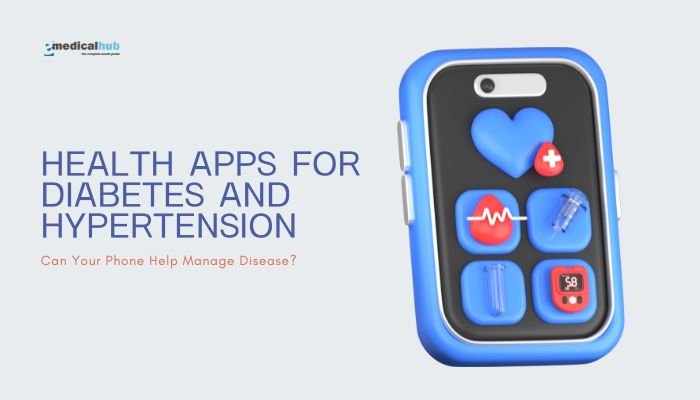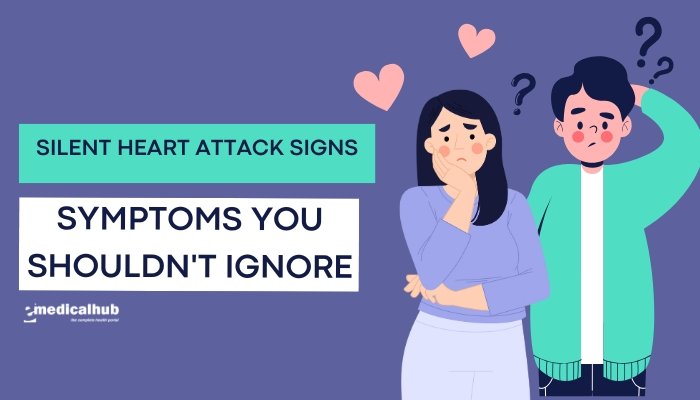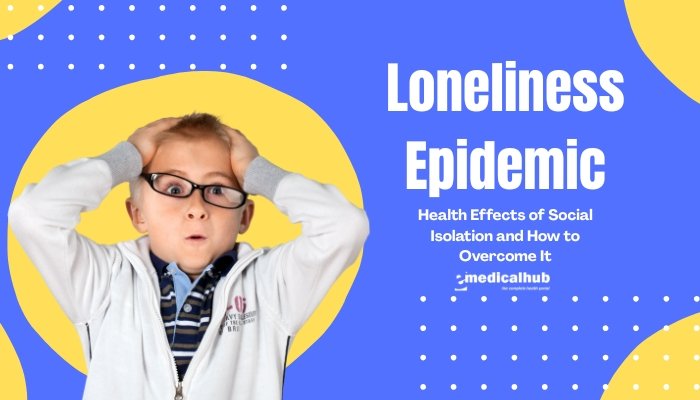Introduction
Smartphones have become part of everyday life. Many people use them for tasks such as communication, shopping, entertainment, and banking. Recently, health apps have gained more importance.
They target conditions including diabetes and hypertension (high blood pressure). These apps promise features such as tracking blood glucose levels, monitoring blood pressure, managing medication schedules, and offering diet or exercise advice.
Diabetes and hypertension affect millions globally. Poor control of these conditions can lead to complications such as stroke, kidney damage, heart disease, or limb problems.
Health apps aim to support daily disease management. Users log symptoms, measurements, and lifestyle habits. Over time, these data provide insights into an individual’s health trends. Doctors can also access them to make more informed treatment plans.
This article explores how mobile health apps support self-care for diabetes and hypertension. It describes the benefits of using such apps, potential drawbacks, and how to select the right one. We will also review how apps integrate with wearables, ways to maintain data privacy, and future trends in digital health.
Readers will learn how a phone can become a powerful tool for controlling blood sugar and blood pressure.
Diabetes and Hypertension: A Brief Overview
Diabetes
Diabetes occurs when the body cannot regulate blood glucose. There are two common types:
- Type 1 Diabetes: The body produces little or no insulin. Patients need daily insulin to manage blood sugar.
- Type 2 Diabetes: The body either resists insulin or fails to make enough of it. Diet adjustments, oral medication, and physical activity form the first line of treatment, though insulin can also be used.
Key Complications of Uncontrolled Diabetes
- Cardiovascular problems (heart attack, stroke)
- Kidney damage (diabetic nephropathy)
- Nerve damage (neuropathy)
- Eye disease (retinopathy)
Hypertension
Hypertension means chronically elevated blood pressure. Blood pressure is measured in millimeters of mercury (mmHg) and reported as systolic/diastolic values (e.g., 130/80 mmHg). Persistent high readings can damage blood vessels and major organs.
Common Complications of Chronic Hypertension
- Increased risk of heart failure
- Damage to arteries, increasing stroke risk
- Kidney problems
- Vision issues due to changes in blood vessels of the eye
Why These Conditions Often Overlap
Many people who have type 2 diabetes also deal with hypertension. Risk factors include obesity, unhealthy diets, sedentary habits, and genetic predisposition. Managing blood sugar and blood pressure together reduces complications and raises life quality.
Rise of Health Apps and Digital Health
Growth of Mobile Health (mHealth)
Mobile health (mHealth) involves using phones or tablets for healthcare delivery. The features range from data recording (e.g., daily steps, heart rate) to telemedicine (video visits). The cost of smartphones has decreased over the past decade, making them widely available. Many also come with sensors, like accelerometers or heart rate monitors, that feed additional data to health apps.
Smartphone Penetration Worldwide
In many countries, smartphone use has become the norm. This provides an opportunity to extend medical guidance into daily life. Individuals can install apps to monitor chronic conditions. Health systems can encourage app use for disease self-management, bridging the gap between clinic appointments.
mHealth in Chronic Disease Management
Diabetes and hypertension are long-term conditions requiring continuous attention. Frequent measurements and lifestyle adjustments boost control. Health apps promise to simplify tasks such as:
- Logging blood sugar or blood pressure readings
- Reviewing daily or weekly averages
- Setting medication reminders
- Suggesting personalized lifestyle tips
Apps may also send data directly to healthcare providers. This real-time tracking can help professionals spot trends and intervene earlier.
Main Features of Diabetes and Hypertension Apps
Blood Glucose and Blood Pressure Tracking
Most diabetes apps let users manually input blood sugar readings. Others sync with glucometers via Bluetooth or near-field communication. Hypertension apps similarly track blood pressure from compatible home monitors. Apps often chart these values over time to reveal progress and patterns.
Medication Reminders
Apps frequently have medication alert functions. They prompt users at specific times. Users can also note if they missed a dose. Over time, these logs help patients see their medication adherence rates.
Nutrition and Meal Planning
Healthy eating is central to controlling diabetes and managing blood pressure. Many apps include:
- Calorie counters
- Carbohydrate tracking (useful for insulin dosing)
- Sodium tracking (relevant for hypertension)
- Healthy recipe libraries
Physical Activity Tracking
Many apps connect to step counters or include integrated workout logs. Activity recommendations could be as simple as a daily step goal or more detailed, including structured exercise routines. By maintaining consistent exercise, users help stabilize blood sugar levels and lower blood pressure.
Goal Setting
Some apps let users set short-term and long-term goals, like an ideal fasting glucose range or a target blood pressure. Achievements or badges can encourage consistent engagement. Clear goals help maintain motivation over time.
Alerts and Notifications
Apart from medication reminders, apps may send motivational messages or daily health tips. If a reading is too high or too low, certain apps trigger alerts suggesting immediate action (e.g., take medication or consult a doctor).
Community Support
A few platforms incorporate discussion forums or group chats where users can share experiences, recipes, or workout tips. Peer support can help patients cope with the demands of chronic diseases.
Data Visualization and Reporting
Visual tools (charts, graphs) highlight trends in blood sugar or blood pressure. Exportable summaries can be shown to doctors, improving communication in clinic visits.
Evidence on the Effectiveness of Health Apps
Clinical Research Findings
Multiple studies show that using health apps can lead to modest improvements in glucose control (often measured by HbA1c) and in blood pressure levels. Key mechanisms include:
- Better Adherence: Reminders reduce missed doses.
- Real-Time Feedback: Immediate awareness of abnormal readings encourages corrective steps.
- Lifestyle Support: Calorie or sodium monitoring fosters healthier eating patterns
Meta-Analyses and Systematic Reviews
A number of meta-analyses indicate that app-based interventions can improve outcomes. However, success depends on user engagement and the app’s design quality. Not all apps follow professional guidelines, and some are more effective than others.
Real-World Usage
Research also highlights that while many people download health apps, long-term retention can be low. Ensuring the app remains user-friendly and relevant is critical for sustained improvements in blood sugar or blood pressure control.
Choosing the Right App
Checking Credibility
Look for apps developed in collaboration with medical professionals or reputable organizations. Some apps are validated by bodies like the American Diabetes Association or recognized as a digital health tool by local health authorities.
Key Questions to Ask
- Is the app easy to use? An intuitive interface matters for consistent logging.
- Is it compatible with your device and any wearables you own? Check if it syncs with your blood glucose meter or blood pressure monitor.
- Does it include privacy features? Health data must be safeguarded.
- Does it offer insights or just raw data? Apps that interpret data and provide actionable advice tend to be more valuable.
- Is there a cost? Some are free. Others charge monthly fees or include in-app purchases.
Peer Reviews and Testimonials
User reviews on app stores can highlight strengths and weaknesses. However, always evaluate them with caution. Some reviews may be subjective. Official reviews from credible health websites might offer deeper analysis.
Healthcare Provider Recommendations
Doctors or diabetes educators may suggest specific apps. They often have experience with multiple apps and can guide patients based on ease of use, compliance with clinical guidelines, and data accuracy.
Integration with Wearable Devices
Smartwatches and Fitness Trackers
Several wearables track heart rate, steps, or sleep. For hypertension, some watches measure estimated blood pressure, though the accuracy varies. For diabetes, certain systems read continuous glucose monitoring (CGM) data and push it to phone apps in real time.
Benefits of Syncing Wearables
- Automatic data collection, reducing manual entry
- Immediate alerts if readings stray outside normal ranges
- Enhanced ability to correlate exercise with blood sugar or blood pressure changes
Limitations
- Wearable sensors might have accuracy issues in certain conditions.
- Device costs can be high.
- Battery drain if apps frequently poll wearable data.
Data Privacy and Security
Importance of Protecting Health Data
Health data is sensitive. If compromised, it can lead to privacy breaches or, in rare cases, insurance discrimination. Reputable apps use encryption and secure servers to store or transmit user data.
Reviewing Privacy Policies
Before installing any health app, check how they handle personal information. Key points:
- Data Sharing: Some apps share data with third parties.
- Account Control: The ability to delete data if you stop using the service.
- Location Tracking: Some apps use location-based features. Confirm if that’s necessary for your use case.
Regulatory Compliance
In some countries, apps dealing with medical data must comply with regulations such as HIPAA (USA) or GDPR (Europe). These ensure a basic level of data protection.
Potential Challenges in Using Health Apps
User Engagement and Motivation
Early enthusiasm can fade. Regular data entry demands time and effort. People with busy lives or chronic stress may abandon apps if they do not see immediate benefits.
Accuracy of User Input
If users forget to record measurements or input them incorrectly, the resulting graphs or advice may be off. For best results, data entry must be accurate and consistent.
Overreliance on Technology
People can become dependent on apps for every health decision. While apps can guide, they do not replace healthcare professionals. Overinterpreting a single glucose reading or blood pressure value can cause unnecessary anxiety.
Cost and Connectivity
Certain advanced apps or integrated devices charge subscription fees. Also, reliable internet access is needed for cloud-based features or telemedicine sessions. In areas with poor connectivity or limited finances, full utilization may be tough.
Privacy Concerns
Some individuals hesitate to upload personal health data to third-party servers. Without guaranteed data security, they fear potential leaks.
Strategies for Successful Use of Diabetes and Hypertension Apps
Set Realistic Goals
Define achievable targets, such as measuring blood pressure daily at the same time or consistently logging pre-meal blood glucose. Overly ambitious goals can cause frustration.
Consistent Routine
Link data entry to regular routines. For example, log blood sugar before each meal and medication intake. Use a daily alarm or phone reminder to remain consistent.
Combine App Use with Professional Advice
Apps provide real-time data but do not replace medical guidance. Share your app logs with doctors or diabetes educators to align daily management with professional treatment plans.
Keep It Simple
Too many features can overwhelm. Some users do well with a straightforward interface for logging readings. Focus on essential functions that support your health goals.
Celebrate Small Wins
When you see improvements in daily glucose readings or a drop in blood pressure over several weeks, acknowledge the success. This positive reinforcement can maintain motivation.
Case Examples of App Use
Balancing Blood Sugar for a Type 2 Diabetes Patient
Alisha, a 45-year-old office worker, struggles with managing her blood sugar. She downloads an app that syncs with her Bluetooth glucometer. Every morning, she checks fasting blood sugar. The app displays a trend line, revealing steady improvement after she began an evening walk routine. It also provides a carbohydrate counter. Over months, she notices her average glucose readings stabilize in a healthier range.
Controlling Hypertension with Reminders and Diet Logging
Daniel, 57, has high blood pressure and takes medication twice daily. He often forgets the evening dose. After installing a hypertension management app, he gets a reminder alarm each night. The app also tracks his home blood pressure measurements. It flags elevated readings and suggests a reduction in daily sodium. Over time, Daniel sees a 10 mmHg drop in systolic pressure, confirmed at his next checkup.
Using Continuous Glucose Monitoring Integration
Carlos, 18, has type 1 diabetes. He relies on a CGM system. A companion app on his phone graphs real-time glucose levels. Alarms sound if glucose is trending too low or too high. This dynamic feedback helps him adjust insulin doses more precisely, preventing severe highs and lows. His HbA1c levels improve, and he experiences fewer hypoglycemic episodes.
Innovations and Future Trends
Artificial Intelligence (AI) Integration
AI could analyze daily logs and predict future glucose or blood pressure trends. The app might learn personal triggers—like certain meals or stress levels—that cause spikes. This predictive analysis could offer proactive suggestions.
Telemedicine and Remote Monitoring
More apps are integrating with telehealth platforms. This allows doctors to review patient logs remotely and schedule virtual consultations. In resource-limited regions, remote care can significantly expand healthcare reach.
Gamification and Virtual Coaching
Some apps encourage user engagement by awarding points for consistent logging or progress toward targets. Virtual coaches or chatbots may offer reminders, check on mood, and adjust daily tasks based on achievements.
Cross-Platform Ecosystems
Tech companies are building ecosystems that link phones, smartwatches, and medical devices into one seamless experience. This synergy can automate large parts of data collection, letting users focus on lifestyle changes instead of data entry.
Genetic Insights
Future apps might integrate genetic data, highlighting personal risk factors. Individuals with certain gene variants might need more frequent screening. However, cost and privacy concerns must be addressed before widespread adoption.
Practical Tips for Users
- Start with One App: Avoid juggling multiple apps initially. Begin with a single, well-rated app covering basic features.
- Check Compatibility: Ensure it supports your phone’s operating system and any wearable devices you own.
- Schedule Logging: Pick set times daily or weekly to update the app. Consistency ensures reliable data.
- Explore Features Gradually: Learn the primary functions first, such as logging and alerts. Explore advanced features later.
- Share Data with a Trusted Professional: If possible, send the app’s reports to your doctor before an appointment.
- Stay Vigilant About Privacy: Use strong passwords, and read the app’s privacy policy thoroughly.
- Contact App Support: If you encounter technical issues or have questions about features, reach out to the support team.
- Adapt Over Time: If your health needs change, switch to a different app or add advanced features to your routine.
Common Myths Around Health Apps
- Myth: “Apps Alone Cure Diabetes or Hypertension.”
Reality: These conditions require a mix of medication, diet, exercise, and professional care. Apps are tools, not standalone treatments. - Myth: “All Apps Are Accurate and Safe.”
Reality: App quality varies. Some lack medical validation or secure data handling. - Myth: “Using a Health App Is Expensive.”
Reality: Many basic apps are free or low-cost. Premium services can add advanced features, but there are plenty of affordable options. - Myth: “You Need Top-of-the-Line Wearables.”
Reality: Manual entry of data still works well. Wearables add convenience but are not mandatory. - Myth: “Health Apps Require Tech Expertise.”
Reality: Many apps aim for user-friendly design. Short tutorials often cover key features.
The Role of Healthcare Professionals
Doctors and Nurses
Healthcare providers remain essential for diagnosing, prescribing medication, and setting treatment targets. Apps can complement clinical decisions with real-world data about daily patterns.
Pharmacists
Pharmacists may suggest apps with medication alerts. They can also help calibrate medication schedules in line with an app’s recommendations.
Diabetes Educators and Dietitians
Educators and dietitians can guide patients on app-based meal planning or carbohydrate counting. They may also coach individuals in understanding app-based suggestions for exercise or weight management.
Future Outlook: Balancing Tech and Human Care
As digital health continues to grow, it is likely we will see more sophisticated apps for diabetes and hypertension. Integration with AI-driven analytics, telemedicine, and personalized health guidelines is on the rise. Patients can expect apps that:
- Offer real-time feedback on fluctuations in glucose or blood pressure
- Analyze daily logs to uncover lifestyle factors that improve or worsen control
- Integrate seamlessly with other digital health services, forming a complete ecosystem
However, technology cannot fully replace face-to-face medical advice or emotional support. Long-term success still depends on consistent user engagement, healthy lifestyle changes, and professional oversight. Adopting these apps as part of an overall health plan can be a step forward in mastering chronic conditions.
Conclusion
Apps for diabetes and hypertension support users in critical self-care tasks. From logging blood sugar or blood pressure readings to providing nutrition and medication alerts, these digital tools bring real-time feedback into daily life. By interpreting patterns in patient data, they can prompt healthier decisions—whether it’s adjusting a meal plan, adding exercise, or taking medication on time.
Though mobile technology can significantly aid disease management, it does not stand alone. Healthcare professionals, supportive communities, and ongoing patient education remain vital. This combination of professional advice, consistent monitoring, and responsible app use can lead to better outcomes. With careful selection of an app, attention to data security, and steady user engagement, many individuals with diabetes or hypertension can improve their daily routines, keep complications at bay, and ultimately maintain a better quality of life.
References
-
- Nguyen HT, Tran CD, Pham TB. Use of mobile health applications in diabetes management: a systematic review. Diabetes Metab Syndr. 2021;15(6):102324.
- Wu Y, Zhou Y, Zheng H, et al. Effect of smartphone-based glucose monitoring on glycemic control in patients with diabetes: a meta-analysis. Diabetes Technol Ther. 2020;22(7):561-568.
- Chandler J, Sox L, Diaz V, et al. A narrative review of smartphone applications for diabetes: current evidence and future directions. Curr Diabetes Rev. 2019;15(1):14-22.
- Parati G, Stergiou G, Bilo G, et al. Home blood pressure monitoring: new developments. J Hypertens. 2021;39(6):1121-1129.
- Lunde P, Nilsson BB, Bergland A, et al. The effectiveness of smartphone apps for lifestyle improvement in high blood pressure: a systematic review and meta-analysis. BMJ Open. 2021;11(11):e046606.
- Conway N, Kelechi T, et al. Digital health: exploring user adoption and provider engagement. BMJ Health Care Inform. 2020;27(1):e100203.
- Waki K, Noda M, Katsuyama H, et al. Efficacy of mobile phone-based health management for type 2 diabetes. Diabetes Care. 2019;42(1):130-136.
- Greenwood DA, Gee PM, Fatkin KJ, et al. A systematic review of reviews evaluating technology-enabled diabetes self-management education and support. J Diabetes Sci Technol. 2017;11(5):1015-1027.
- Alessa T, Abdi S, Hawley MS, et al. Smartphone apps to help people with diabetes in managing diabetes self-care: systematic review. JMIR Mhealth Uhealth. 2018;6(12):e10061.
- Hong K, Alberti KG, Johnston DG, et al. The role of digital health interventions in the management of hypertension. Hypertens Res. 2020;43(1):73-78.
- Vitallo E, Santoro E, Bini F, et al. Privacy, security, and regulatory considerations in mobile health apps for diabetes and hypertension. JMIR Biomed Eng. 2021;6(2):e14567.
- Torbjørnsen A, Småstuen MC, Jenum AK, et al. A digital diabetes self-management intervention: effects on psychosocial factors and clinical outcomes. BMJ Open Diabetes Res Care. 2020;8(1):e001351.




